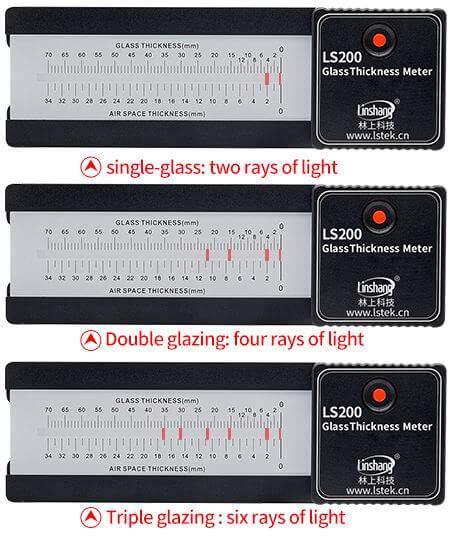How To Measure Glass Thickness
Ronan Farrow
Apr 01, 2025 · 3 min read

Table of Contents
How to Measure Glass Thickness: A Comprehensive Guide
Measuring glass thickness accurately is crucial for various applications, from DIY projects to professional glasswork. Whether you're replacing a broken windowpane, designing a custom aquarium, or simply curious about the thickness of a piece of glass, knowing the right method is essential. This guide will walk you through several effective ways to measure glass thickness, ensuring accurate results every time.
Why Accurate Glass Thickness Measurement Matters
Precise measurements are paramount for several reasons:
- Functionality: Incorrect thickness can lead to structural weakness, leaks (in aquariums or similar applications), and potential safety hazards.
- Replacement: Accurate measurements ensure you purchase the correct replacement glass, avoiding costly mistakes and wasted materials.
- Project Planning: Knowing the thickness informs decisions about framing, support structures, and other design aspects.
- Quality Control: In manufacturing or industrial settings, consistent thickness measurements are critical for maintaining quality standards.
Methods for Measuring Glass Thickness
Several methods can be used, each with its own advantages and disadvantages:
1. Using a Caliper
A vernier caliper or digital caliper is the most accurate and preferred method for measuring glass thickness. These tools provide precise measurements down to fractions of a millimeter.
-
How to use: Carefully place the jaws of the caliper on opposite sides of the glass, ensuring even pressure. Read the measurement directly from the caliper's display or scale. Take multiple measurements at different points along the glass to account for any variations in thickness.
-
Advantages: High accuracy, easy to use.
-
Disadvantages: Requires purchasing a caliper; may not be practical for very large or irregularly shaped glass.
2. Using a Micrometer
A micrometer offers even greater precision than a caliper, measuring to thousandths of an inch or micrometers. This method is ideal for extremely precise measurements.
-
How to use: Similar to a caliper, carefully position the anvils of the micrometer on the glass, ensuring even pressure. Read the measurement from the micrometer's scale or display. Multiple measurements are recommended.
-
Advantages: Extremely high accuracy, suitable for very precise work.
-
Disadvantages: Requires purchasing a micrometer, more complex to use than a caliper.
3. Using a Ruler and Feel Method (Less Accurate)
For less critical applications, a ruler and your sense of touch can provide a reasonable estimate, though accuracy is significantly lower.
-
How to use: Place the glass on a flat surface. Use a ruler to measure the height of a stack of several identical glass pieces. Divide the total height by the number of pieces to estimate the thickness of one piece. This method relies on the pieces being consistent and the ruler being precise. This also is a good way to check the consistency of thickness on flat surfaces across a larger piece of glass.
-
Advantages: Requires only readily available tools.
-
Disadvantages: Lower accuracy; highly dependent on consistent glass thickness and precise ruler measurements.
Tips for Accurate Measurement
- Clean the Glass: Ensure the glass surface is clean and free from debris to ensure accurate measurements.
- Multiple Measurements: Always take multiple measurements at different points along the glass to account for potential variations in thickness.
- Proper Tool Usage: Familiarize yourself with the proper use of calipers or micrometers before taking measurements to avoid errors.
- Safety First: Wear appropriate safety glasses when handling glass to prevent eye injuries.
Conclusion
Choosing the right method for measuring glass thickness depends on the required accuracy and the tools available. While calipers and micrometers offer the highest precision, the ruler and feel method can suffice for less demanding situations. Remember always to prioritize safety and take multiple measurements for the most reliable results. By following these guidelines, you can confidently determine the thickness of your glass with accuracy.
Featured Posts
Also read the following articles
| Article Title | Date |
|---|---|
| How To Lighten The Trigger Pull On A Taurus Revolver | Apr 01, 2025 |
| How To Pass Mouth Swab Instantly | Apr 01, 2025 |
| How To Ohm A Wheel Speed Sensor | Apr 01, 2025 |
| How To Kill Mold In Ac Ducts | Apr 01, 2025 |
| How To Make Mustang Grape Wine | Apr 01, 2025 |
Latest Posts
Thank you for visiting our website which covers about How To Measure Glass Thickness . We hope the information provided has been useful to you. Feel free to contact us if you have any questions or need further assistance. See you next time and don't miss to bookmark.
